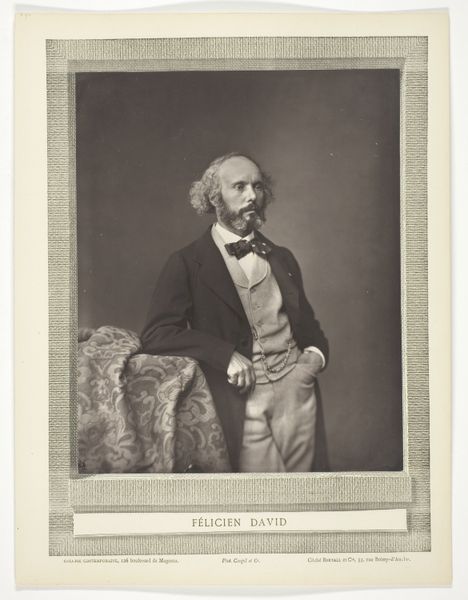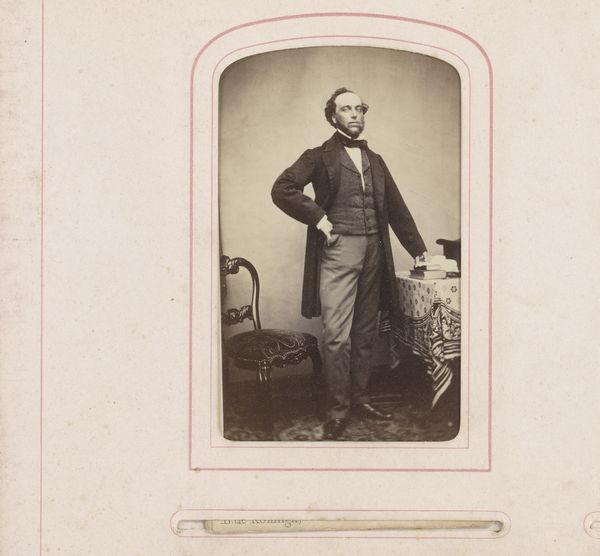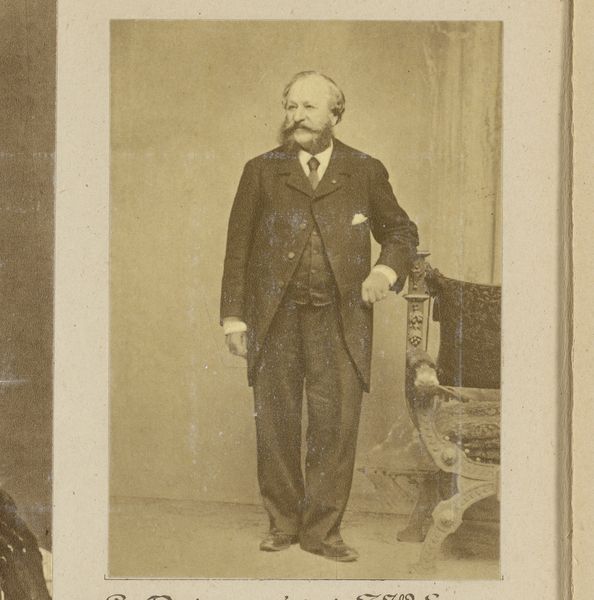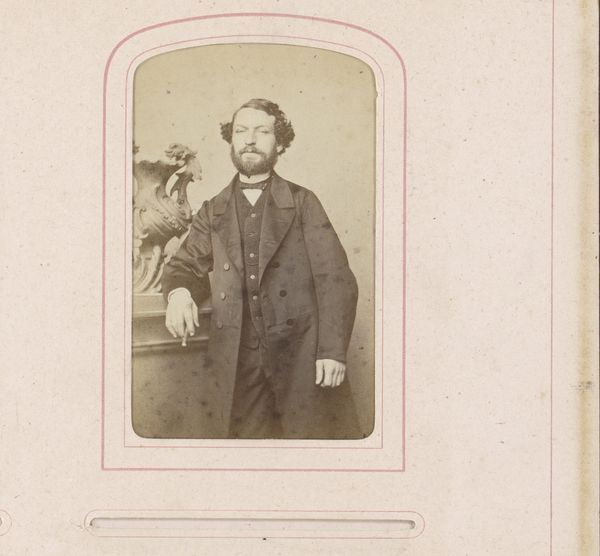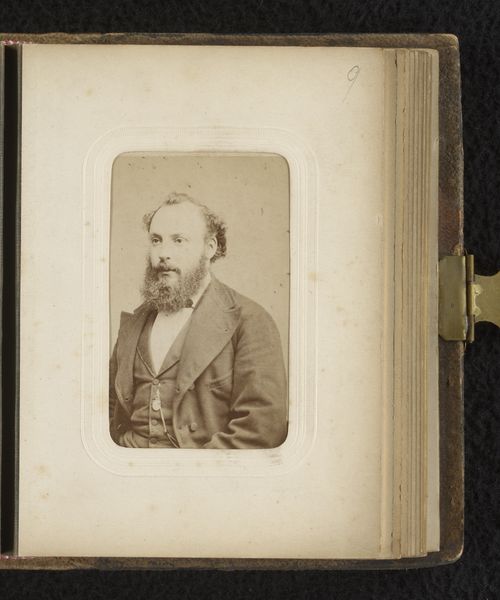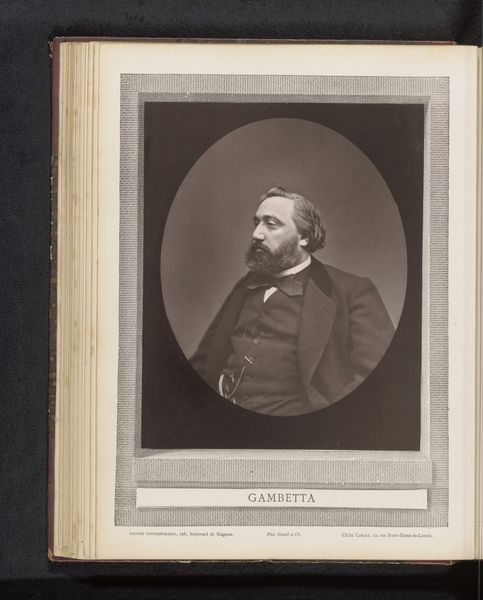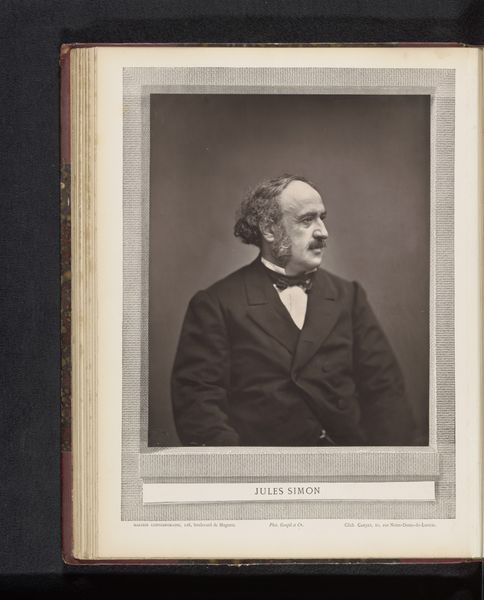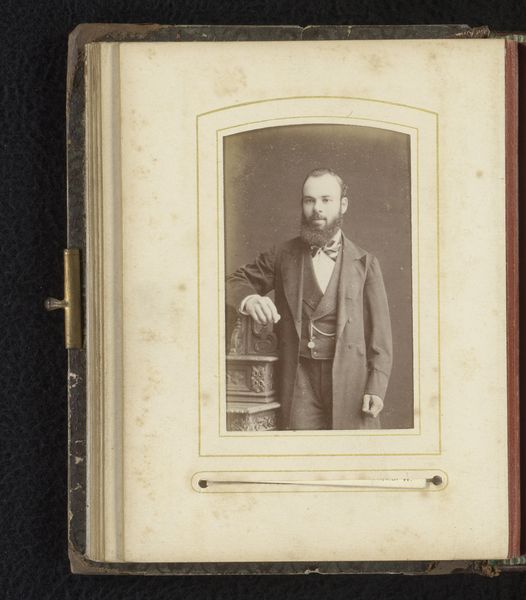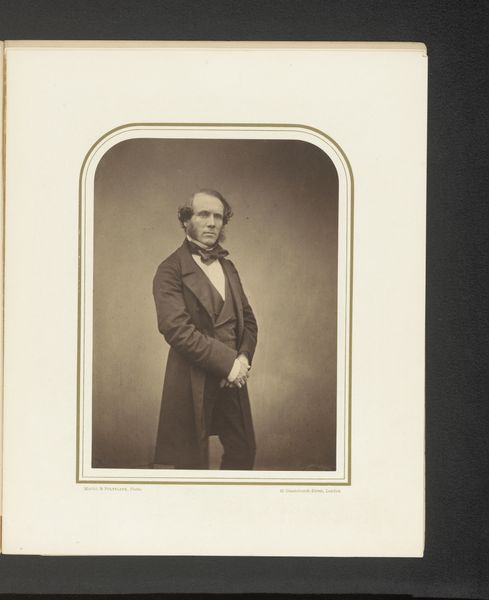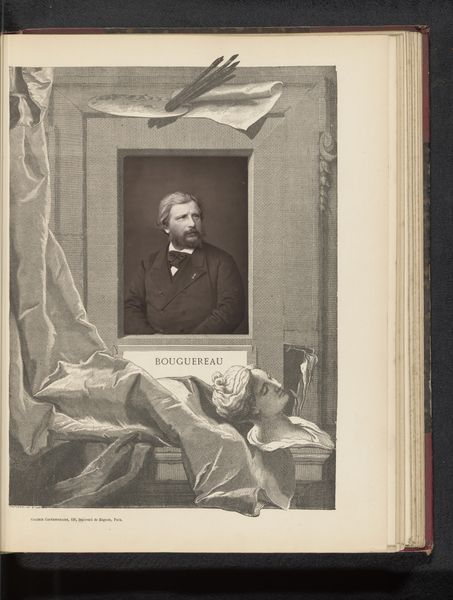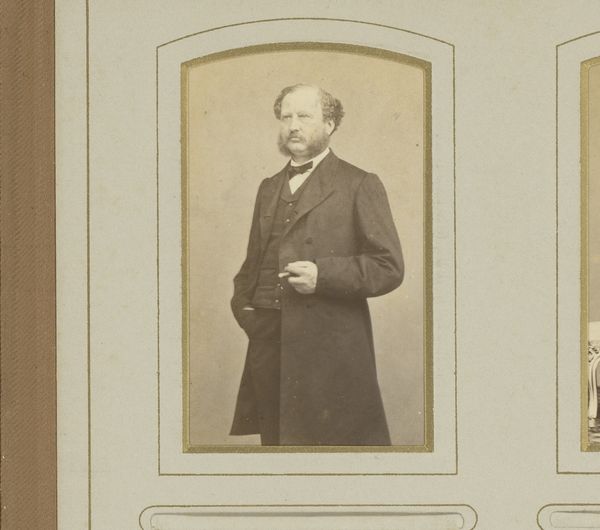
Dimensions: height 306 mm, width 227 mm
Copyright: Rijks Museum: Open Domain
Editor: Here we have an albumen print, a photograph of Félicien-César David, taken before 1876 by Bertall et Cie. The way he’s leaning casually against that draped table gives him such a confident, almost theatrical air. What do you make of this portrait? Curator: Notice how the patterned fabric serves as a compositional element but also hints at David’s cultural associations. Composers, and artists generally, often adopted signifiers—bow ties, flowing hair, the affected pose—that marked them as “artistes.” Are these truly individual expressions, or conventions of cultural performance? Editor: That’s fascinating. It feels almost like he’s consciously adopting a role. Curator: Exactly! And photography at this time, particularly portraiture, was carefully constructed. He is pictured amidst suggestion and shadow, rather than revealed by direct light. It suggests the romantic mystique associated with artistic genius. Editor: So, the romantic artist as a subject of both admiration and mystery? Curator: Precisely! The details like his carefully styled hair and elegant vest, paired with that casual lean, construct a very specific image. Think about the legacy of Romanticism at this point: its iconography became established, even expected. What do we, looking at this image today, expect of an artist? How much of that is inherited? Editor: I never thought about it that way, how much these visual cues have shaped our understanding of artists. Curator: The photographic image is a medium of constructed symbolism; an active visual rhetoric that builds our understanding, layer by layer. Editor: Thank you! I'll certainly be considering images in a whole new light.
Comments
No comments
Be the first to comment and join the conversation on the ultimate creative platform.
